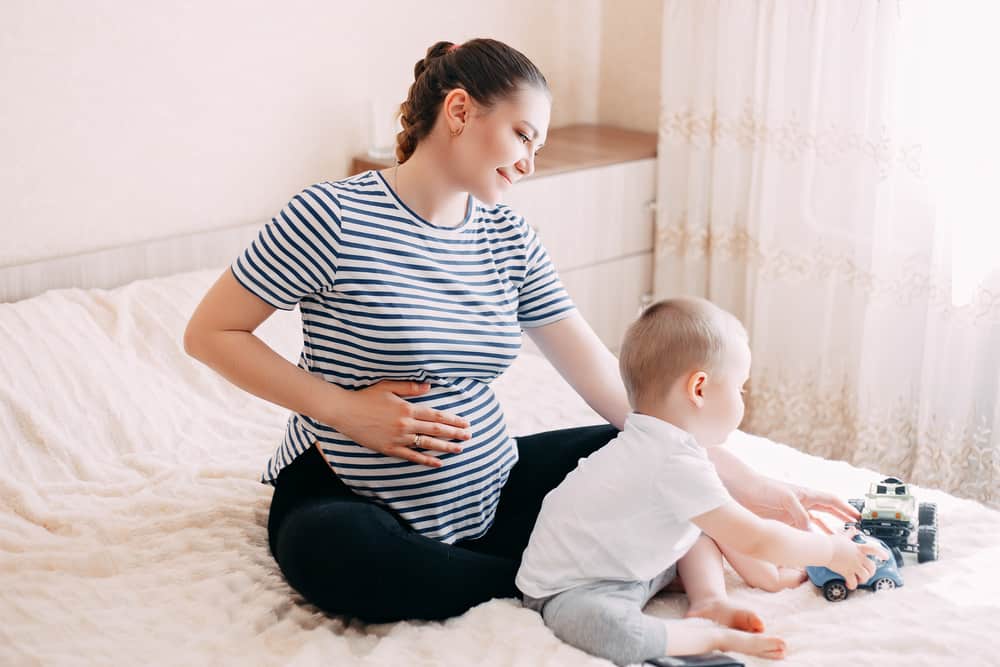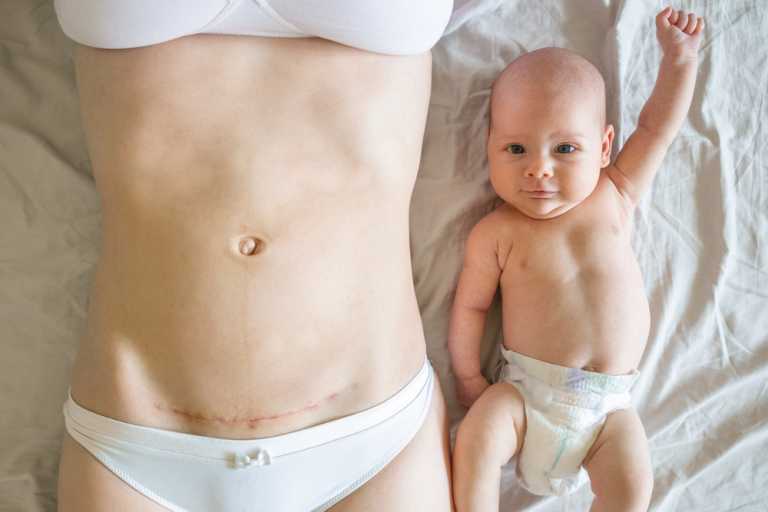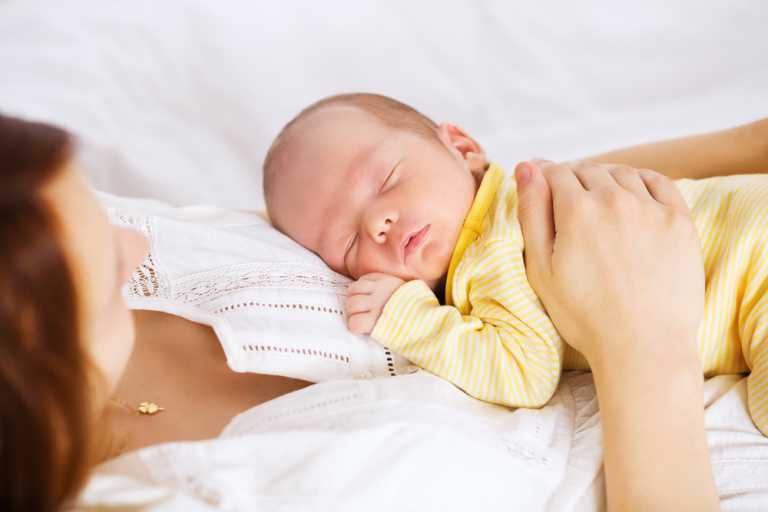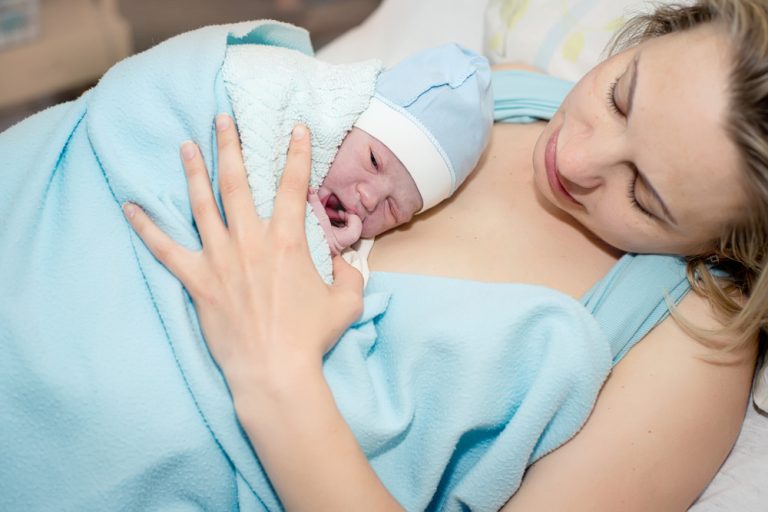An incredible thing about women is that they can undergo major abdominal surgery and a brutal recovery. Then, in just a few weeks, they’ll ask when they can do it all again. If you’re worried about your fertility, dreaming of a small sibling age gap, or just eager to get pregnant again, this might be you.
So, how long after a C-section can you get pregnant?
Surprisingly, the answer can vary wildly from 6 to 36 months. But don’t worry; we’re here to help you make sense of it all, and we’ve broken it down, so you can quickly work out what’s best for you and your body.
When to Get Pregnant After a Cesarean Section
The ideal time to get pregnant after a C-section depends on your family, situation, and goals. For example, if you plan to have another cesarean section, it’s OK to get pregnant much sooner than if you’d like to have a vaginal birth next time.
Check out this handy table to find the pregnancy interval that’s right for you:
| Situation | Time Between Delivery and Conception |
|---|---|
| Planning a second elective C-section with no risk factors | 6 months |
| Planning a third elective C-section with no risk factors | 12 months |
| Planning a second or third elective C-section with risk factors | 18 months |
| Planning a vaginal birth after a C-section (VBAC) | 9 to 15 months (ask your doctor) |
| Pregnancy after C-section scar complications | 24 to 36 months |
Now that you know which timeline you need to stick to, let’s look at why.
Planning a Second Elective C-Section With No Risk Factors
The absolute earliest time you should get pregnant after a cesarean is 6 months. This is because your body and incision need time to heal fully to support future pregnancies.
According to the American College of Obstetricians and Gynecologists (ACOG), pregnancy intervals of less than 6 months carry a significant risk of uterine ruptures and preterm births.
Planning a Third Elective C-Section With No Risk Factors
It’s best to wait at least 12 months after a second cesarean before getting pregnant again. This is because your chance of uterine rupture jumps from 1% after one cesarean to 3.9% after two.
Planning a Second or Third Elective C-Section With Risk Factors
Risk factors like obesity, diabetes, or a maternal age of over 35 years can slow the healing of your scar. This means it would be safer for you to wait a little longer before attempting your next pregnancy.
To put it into perspective, your risk of uterine rupture after a cesarean section is 5% if you get pregnant before 18 months. This drops to 2% between 18 and 24 months and 1% after that.
Planning a Vaginal Birth After a C-Section (VBAC)
Going through what doctors call the “trials of labor” will put pressure on your scar, which can cause it to rupture. This risk is two to three times higher if you have a VBAC less than 24 months after your cesarean.
For this reason, it’s best to wait 15 months before conceiving again. However, if you are low-risk, seek advice from your doctor. Some hospitals allow you to attempt a VBAC from 18 months without any problems.
Pregnancy After C-Section Scar Complications
If you experienced a postpartum complication like infections, scar dehiscence, or bladder damage, you should wait 24 to 36 months before trying to conceive. This is the safest time to get pregnant again, and it’s actually less risky than waiting more than 5 years.
What Happens if You Get Pregnant Too Soon After a C-Section?
If you’d like a small age gap between siblings or are worried about your fertility, getting pregnant sooner rather than later can be tempting. So, what are the risks, and are they worth taking?
Uterine Dehiscence
This is a slight opening of your scar. It can cause pain and discomfort but does not usually cause major issues. However, you should report it to your doctor and take extra care to keep the area clean.
Uterine Rupture
Uterine rupture is when your uterine walls tear open. This is a life-threatening emergency for both you and your baby. Fortunately, it’s rare and manageable if you give birth in a hospital.
Placenta Accreta
This is where your placenta grows into the wall of your uterus. It’s a major complication that can lead to hemorrhaging, organ failure, and even death. The risk is higher following cesarean deliveries and in women with short pregnancy intervals.
Placenta Previa
This is where part of your placenta grows across your cervical opening, which is more common after cesareans. It can cause bright red bleeding in late pregnancy and complications during delivery.
Preterm Birth
A premature or preterm birth is one that occurs before 37 weeks. It’s significantly more likely to happen if you give birth less than 18 months after a cesarean section, but researchers don’t fully understand the reasons. Some experts suggest it’s due to a strain on the mother’s nutrient resources.
Thanks to modern medicine, around 66% of babies born at 24 weeks and 98% of babies born at 30 weeks will survive after time in the NICU. Unfortunately, an early birth may impact your child’s health long-term.
Low Birth Weight
Some studies have found a link between pregnancy intervals of less than 18 months and lower birth weights.
Maternal Anemia
You would’ve experienced twice as much blood loss during your cesarean than if you’d had a vaginal birth. It could be even more if you had an emergency C-section. Having a short birth interval could leave you with depleted iron levels and anemia.
If you’re at risk of any of these conditions, your doctor may recommend more frequent ultrasounds for your and your baby’s safety. You may also lose the choice to have a VBAC or home birth.
Do You Have to Delay Getting Pregnant After a C-Section?
The risks may seem scary, but it’s important to remember they exist for any pregnancy, regardless of the gap. Also, as long as you wait at least 6 months, we’re talking about tiny percentages.
You may decide that, in your situation, it’s worth risking a small gap. For example, you might want to try to conceive sooner for the following reasons:
- You are over 35.
- You have a history of fertility problems.
- You have polycystic ovarian syndrome.
- You feel fit, healthy, and fully recovered.
Ultimately, the decision is up to you. Just remember, in some areas, your healthcare provider may not allow VBAC as an option until at least 18 months after your last cesarean.
FAQs
Is It Harder to Get Pregnant After a C-Section?
In some cases, scar tissue, inflammation, or damage to fallopian tubes lowers the chances of getting pregnant after a C-section. If you’ve been trying for over 6 months to get pregnant, you may be suffering from secondary infertility. If so, see your doctor to discuss treatment options.
What Are the Benefits of Delaying Pregnancy After a Cesarean Section?
Although it can be frustrating, many reasons exist to put off conceiving again.
For example, waiting 18 months before conception:
- Reduces the risk of complications during childbirth.
- Gives more time for scarring to heal between surgeries.
- Provides more time to recover levels of nutrients and folic acid.
- Decreases the risk of congenital disorders.
Do They Cut in the Same Place for a Second C-Section?
Usually, your doctor will try to cut through your original scar for subsequent cesarean sections. However, depending on scar thickness, this isn’t always possible, and they will make the best call for you.
How Many C-Sections Can a Woman Have?
There is no limit to how many cesarean sections mothers can have. However, most doctors agree that 3 is a good number to stop at.




